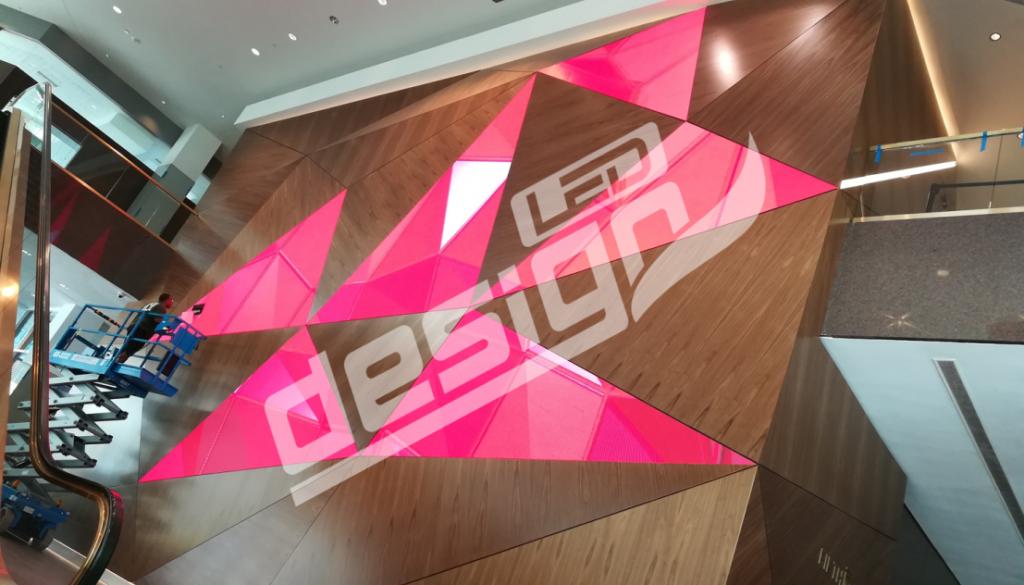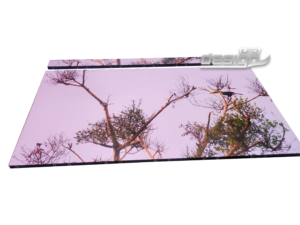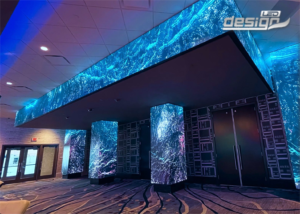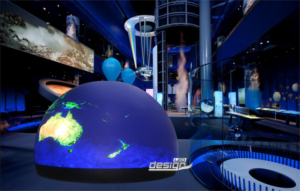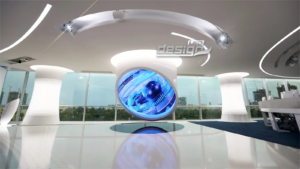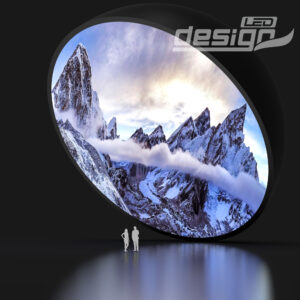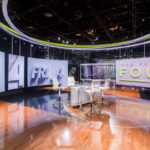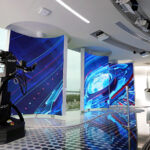Light Light-emitting diode (LED) displays have emerged as one of the most significant and adaptable breakthroughs in visual technology. Its path has been extraordinary, from humble beginnings to sophisticated current uses. This blog digs into the evolution of MicroLED displays, investigating their history, current state and intriguing future potential.
Illuminating the Path of Innovation
Few breakthroughs in visual technology have been as transformational and flexible as Light Emitting Diode (LED) screens. It’s journey has been spectacular, from their humble beginnings to the sophisticated modern uses we see today.
In this blog, we will journey through the history of LED displays, digging into their current status and exploring the amazing potential that the future offers.
- The Origins
LED displays first appeared in the early 1960s, when scientists at Texas Instruments and Fairchild Semiconductor independently discovered the light-emitting properties of diodes. Nick Holonyak Jr., a General Electric engineer, designed the first functional visible-spectrum LED in 1962, earning him credit for this significant achievement. This LED emitted a red light, heralding the beginning of LED technology.
Brighter and more Colourful Displays
In the following decades, intensive research and development efforts concentrated on boosting LED technology’s brightness, efficiency, and colour range. Engineers and scientists laboured feverishly to create green and blue LEDs, paving the path for full-colour displays.
LED technology advanced during the 1970s and 1980s, and manufacturers began implementing LEDs into alphanumeric displays and digital clocks. LEDs have shrunk in size while increasing in luminance, making them appropriate for outdoor signage and displays.
Early LEDs were small and dim, mostly employed as indicator lights in electronic gadgets. Initially limited by poor brightness and color restrictions, large-scale displays faced challenges due to their potential.
The First Generation of Large-Scale Displays
LED displays made a significant breakthrough in the 1990s and early 2000s. LED manufacturing techniques have enabled the construction of larger and brighter displays, resulting in widespread use in stadiums, billboards, and outdoor advertising. These displays were extremely visible even in broad daylight, making them popular for advertising and public information.
LED Television and Monitor Revolution
LED displays replaced traditional liquid crystal displays (LCDs) in televisions and monitors around the mid-2000s. LED-backlit LCDs provided increased brightness, energy efficiency, and colour reproduction. This transformation changed the visual display sector, ushering in a new era of LED technology.
n the Digital Age
LED screens have become ubiquitous, integrating into our daily lives. Commercial applications, residences, airports, retail malls, and even highway digital billboards host these displays.
Modern LED displays have improved tremendously, with features like ultra-high definition (UHD), high dynamic range (HDR), and even flexible and transparent displays. MicroLED displays uses have expanded due to technical developments, from entertainment and advertising to education, healthcare, and public infrastructure.
The Boundaries of LED Technology
LED displays have a bright future, with continuing research and development focusing on several important areas.
Improved Energy Efficiency and Longevity
There are ongoing efforts to further increase the energy efficiency of LED displays. This includes reducing power usage when in operating and standby modes. Furthermore, research into sustainable LED materials is ongoing to decrease their environmental impact and promote a greener future.
Micro-LED Lighting Technology
MicroLED display are a significant advancement in LED display innovation. It entails using extremely small LEDs, often less than 100 micrometres in size, producing displays with extremely high pixel density, higher brightness, and enhanced energy efficiency. Predictions suggest that microLED display, offering brighter and more colorful panels for televisions, smartphones, and smartwatches, will revolutionize consumer electronics.
Displays that are flexible and foldable
Another fascinating prospect is the development of flexible and foldable LED screens. In this scenario, envision displays that can be rolled up or folded, leading to the creation of novel gadget form factors. This can transform how we interact with technology, making it more portable and responsive to our needs.
Augmented Reality (AR) and Virtual Reality (VR) integration
LED technology integration with AR and VR applications is on the horizon. To enhance the immersive experience, one could integrate LED screens into AR glasses. The ability to directly project high-quality graphics onto lenses could open up new opportunities in gaming, education, and professional applications.
3D Displays
3D LED display advancements will provide the appearance of depth and improve the viewing experience. The potential use of this technology extends to entertainment, advertising, and simulation, offering a more engaging and realistic visual display.
Long-Term Advantages
They have transformed the world of visual technology, providing a wealth of benefits that will last well into the future. T offer numerous benefits, ranging from increased energy efficiency to longer lifespan and a wide range of applications. In this article, we will look at the long-term benefits of LED displays and their impact on numerous facets of our lives.
Energy Conservation
The great energy efficiency is one of the most significant long-term benefits. AndLED technology uses substantially less energy than traditional lighting and display technologies, making it an environmentally friendly choice.
Increased Lifespan
LED displays have a long lifespan, frequently lasting tens of thousands of hours. This longevity means that consumers can enjoy consistent and dependable performance for longer. The implementation of LED technology significantly decreases the need for regular replacements, leading to reduced resource utilization and less technological waste. This supports a more sustainable and cost-effective solution over time.
Increased Durability and Dependability
Built to withstand various environmental conditions, including temperature fluctuations, humidity, and even slight physical impacts, LED displays ensure durability and resilience. This endurance guarantees that they continue to work well over time, making them a dependable investment for both commercial and home applications.
Conclusion
The growth of Light light-emitting diode (LED) displays from their origin to the present is a visual technology marvel. They began modestly in the 1960s and have evolved into critical components of our digital environment. This blog explored the evolution and contemporary condition, demonstrating their seamless incorporation into modern life.
With the integration of energy-efficient microLED displays, flexible screens, and augmented reality, the future promises incredible advancements. Poised to illuminate our future for years to come, these technologies offer visually attractive, energy-efficient, and immersive experiences.
DesignLED is a global leader in LED display technology, specializing in the development, manufacturing, and distribution of high-quality, innovative LED display solutions. With a focus on MicroLED displays and immersive LED Dome experiences, DesignLED delivers cutting-edge products that cater to a wide range of industries, including broadcasting, digital signage, and entertainment. Committed to delivering unparalleled visual performance and energy efficiency, DesignLED strives to empower businesses and content creators with the tools to create stunning and engaging visual experiences.
